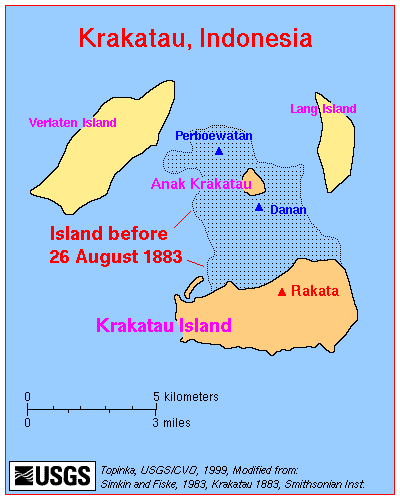 |
| http://upload.wikimedia.org/wikipedia/commons/6/67/Map_krakatau.gif |
It was amazing to travel to Ujung Kulon National Park and all of the beautiful plants and animals were so exotic. It was interesting to see the volcano and learn all about the history of its eruptions. The most famous explosion of Krakatoa was in 1883. A series eruption began in May and lasted all the way until a huge explosion and the destruction of the major island of Krakatoa in August. Before this huge eruption there was a lot of seismic activity as the plates shifted and about 3 months before steam started to vent out. The explosion that blew the island apart was caused by super-hot steam that was created when walls of the volcano ruptured and let water into the magma chamber.
The Island exploded with the force of 100 megatons and was heard as far a way a Madagascar! Huge 131 ft Tsunamis hit the coast of Java and Sumatra destroying 163 villages and killing thousands. Ash from the explosion rose 50 feet int the air and effected the weather the next year.
The Krakatoa volcano continues to be active and explode quite often every year. A new island called Anark Krakatoa (Child of Krakatoa) was created and has been growing in the same place the old island of Krakatoa was. Anark Krakatoa grows about 5 inches per week and is an amazing island.
 |
| An eruption in 2008 http://upload.wikimedia.org/wikipedia/commons/4/44/Krakatoa_eruption_2008.jpg |
It was so cool to see this scientific and historical wonder but this also means my trip is almost over! One more stop until my tectonic tour comes to an end.
- Katherine
No comments:
Post a Comment